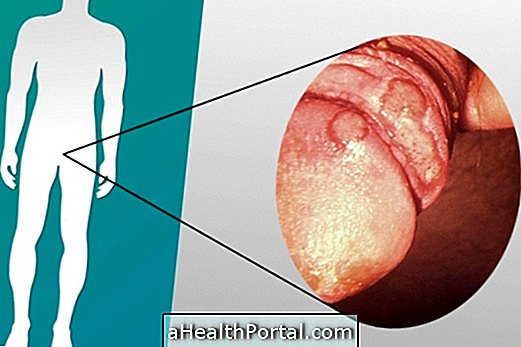Paraphimosis occurs when the skin of the foreskin gets stuck and can not return to its normal position, compressing the penis and reducing the amount of blood reaching the glans, which can lead to the development of an infection or progressive death of the tissues in that region .
Because it can lead to tissue death, paraphimosis is an emergency situation, which should be treated as soon as possible in the hospital.
The treatment of paraphimosis varies according to the age and severity of the problem, but usually the first step is to reduce swelling of the penis with the application of ice or removal of blood and pus and in more severe cases it may be necessary to perform a circumcision .

What are the signs and symptoms
Signs and symptoms of paraphimosis include swelling at the tip of the penis, intense pain at the site, and a change in the color of the tip of the penis, which may be very red or bluish.
How is the treatment done?
Because it can lead to tissue death, paraphimosis is an emergency situation, which should be treated as soon as possible in the hospital. On the way to the hospital, ice packs can be applied on site to reduce pain and swelling.
Treatment for paraphimosis varies according to the age and severity of the problem, but usually the first step is to reduce swelling of the penis by applying ice or removing blood and pus with a syringe and needle.
After reduction of swelling, the skin is returned to its normal position manually, usually under anesthesia, as it can be a very painful process.
In more serious cases, the doctor may indicate an emergency circumcision, where the skin of the foreskin is completely removed through surgery to release the penis and prevent the problem from happening again.
What is the difference between paraphimosis and phimosis?
Phimosis consists of an inability or greater difficulty in exposing the glans, because the foreskin, which is the skin that covers it, does not have sufficient opening. Paradoxis is a complication that is caused by phimosis, when the person can not cover the glans, leading to the appearance of symptoms such as intense pain, swelling and the appearance of a bluish tinge in the penis.
Understand better what phimosis is and what forms of treatment.
Possible causes of paraphimosis
Paraphimosis occurs most often in men with phimosis, with a previous history of infection in the genital organ, direct trauma during intimate contact, piercing implantation or in the elderly with bladder catheter. Eventually, paraphimosis may occur after sexual intercourse when proper organ hygiene is not done and the foreskin does not return to the correct location after sagging.
Paraphimosis can also occur in boys with physiological phimosis when parents try to reduce phimosis incorrectly, for example.
























